- Home
- Michael Murphy
Jacob Atabet: A Speculative Fiction
Jacob Atabet: A Speculative Fiction Read online
JACOB ATABET
A Speculative Fiction
Michael Murphy
For Sri Aurobindo
and
Frederic Spiegelberg
who introduced me to these possibilities
Contents
EDITOR’S INTRODUCTION
PART ONE
1
2
3
4
5
6
7
8
PART TWO
9
10
11
12
13
14
15
16
17
18
19
20
21
PART THREE
22
PART FOUR
23
24
25
26
27
28
A BIOGRAPHY OF MICHAEL MURPHY
ACKNOWLEDGMENTS
EDITOR’S NOTE
Editor’s Introduction
IT IS HARD TO TELL whether the strangely formed narrative that follows is a record of actual events or an imaginative probe of the future. My inquiries during the past four years have only increased its mystery—first, by confirming Darwin Fall’s description of his own transformation from an intensely tormented man on the verge of a mental breakdown into a figure of exceptional health and well-being, and second, by failing to establish the fact that there was an Atabet or Echeverria family living near Telegraph Place, or a Corinne Wilde or a Kazi Dama. Various minor figures in the story are people I recognize (indeed, I appear for a moment myself), but Fall must have changed the names of the central characters or made them up entirely. To make matters more confusing, Casey Sills, Fall’s closest associate in the publishing business, says she never met a Jacob Atabet, though he had supposedly lived in North Beach for more than twenty-three years. Yet she believes there had to be someone like him, Fall’s story was so vivid and consistent. Why then, did Fall choose such a convoluted way of describing the man? And why did he leave his account of their adventure with me?
In July of 1972, he approached me with his strange request. He was about to take a trip to Russia and Western Europe to investigate research there on “the clairvoyant perception of atomic structure” and wanted to leave his papers in my custody until he returned. It was important they be held in safekeeping, he said, because the experiment they described had “released forces that could be used for good or evil.” The request was surprising, for we had never to my mind established a relationship close enough to warrant such trust. I agreed to keep his papers only because I was certain he would soon come back to claim them. In the days following his visit, however, I began to realize how strange this custody was and tried to contact him through the Greenwich Press—only to find that he had left the city already. I was never to see him again.
When I read his memoirs that summer I sensed at once that they might be a record of something momentous. It is an opinion I still hold. If the story they tell is true, of course, it describes a breakthrough in consciousness that points the way toward new vistas of adventure and discovery. “Jacob Atabet” would have to be one of those dehasiddhas of the Yogic tradition that Fall describes is his journals, a master of bodily transformation who was achieving an unprecedented conquest of matter. That such a person actually exists (or existed) seems plausible to me, increasingly so as the discoveries of psychology and physics continue to reveal the intertwinings of mind and the physical world. It is inevitable, I think, that pioneers like this will appear in our midst, that the modern West will produce its own kind of religious genius. And it makes sense that such a person would talk about “cracking the code of matter” as Fall has Atabet doing. Our modern age is in love with the material world and will have to uncover its secret, I think, before turning for salvation to a disembodied Beyond.
Fall’s narrative was taken directly from his diary, it seems, for journal entries carry much of the story. Whether he intended to write a copy a complete and continuous account of his adventure is uncertain. For perhaps, like Michelangelo’s “Slaves,” the book’s incompleteness was meant to suggest the unfinished venture it described, the human spirit struggling forth from its material sleep.
San Francisco
May 1977
PART ONE
Ishavasyamidam sarvam.
“All this is for habitation by the Lord . . .”
Isha Upanishad
1
THE EVIDENCE WAS ARRANGED all around me in the room, stacked in bundles on my desk, indexed in the rows of files that covered two walls. The central hypotheses and their dozens of corollaries had been worked out again and again until my thesis seemed complete. And yet outside this room it all would grow uncertain. Separated from these pictures and reports the whole thing would begin to look like a vast illusion.
I opened the folder in front of me and took out the photographs of Bernardine Neri. This collection, more than any other evidence I possessed, seemed incontrovertible. The changes in her body were clearly visible in this sequence of portraits taken over the three-year period of her religious ecstasy. Analysts of photographic process had vouched for the pictures’ authenticity, dozens of witnesses had sworn that she passed through the transformations they recorded, her changes fit my thesis to perfection. There was no way I could rationally doubt that she had changed from the pinched little woman in picture one to the radiant beauty in picture six. Too many doctors, bishops, family members and friends were there to swear it had happened. Each time I looked at these pictures and remembered the months I had spent in the towns of the Arno Valley searching out this, my most convincing case, I would have to decide once again that this recurring sense of illusion was simply a failure of nerve in the face of the guilt I felt. Like my namesake Charles Darwin, I had begun to feel that by constructing this theory I was committing a murder.
And yet . . . I had never met Bernardine Neri. The changes in her stature and bearing might have happened to anyone who had gone through a training that strengthened will and morale. Such changes took place almost daily in any army boot camp. And the other less explicable changes might have existed only in the eyes of her devoted beholders. Yet those more difficult stories involved witnesses I had to respect. Dozens of people had seen the light that came from her, and that light was recorded in several photographs including two on the table before me. A team of German and Italian doctors had studied the phenomenon for days and had published their reports about it in three European medical journals. I could not doubt that part of her transformation. Nor could I question the mysterious and unaccountable joy she caused in the people around her. Descriptions of that joy by her friends and devotees had done as much as anything to convince me that she was an authentic spiritual force.
I stood and crossed the room. Piled on one of the files was a collection of similar testimony I had gathered from athletes around the world. The story of the Indian runner lay on top of the stack. Though most sportspeople would not believe it, he had run a marathon near Bombay in under two hours, more than ten minutes faster than the world record, and in the act had entered a state which yogis might call the nirvikalpa samadhi. He had “disappeared,” he said, in that run and had changed from the dapper, prancing Jack of Spades one could see at the start into the beautiful but much older man at the finish. There were pictures of him talking to spectators afterwards, his face drawn into a look that might have belonged to a saint in rapture, and a series of snapshots showing him doing his crazy routine. To the spectators’ amazement, this man had run for another hour to “confirm the thi
ng he had found,” and a British doctor who was there had told me he had spent some of that time doing sprints. Trackmen I had talked to about the story would claim that most Indians didn’t know how to count. It was impossible that a man with so little training could have done it. And yet there had been witnesses I could trust, and the Indian Federation of Sport had put its reputation behind it. Three stopwatches had given the identical time—one hour and fifty-eight minutes! No one would have believed a single watch. Surveying the photographs now I had to say there was no way I could doubt it: these examples I had collected were irrefutable evidence of the body’s still unknown power to manifest the glories of spirit. No one knew how far that power might go.
I went to the window and gazed down at the street. Each time I looked through this material my doubts subsided. The evidence, the logic, were all in place. And yet I knew that the moment I left this room the sense of illusion would hit me. And the guilt. The fact that this study, this knowledge, would not help me with my own problems—that it even seemed to make them worse—put a shadow over everything I did. There was a fundamental lie, in my life or in my theories.
A decrepit-looking crowd had gathered in front of the coffee shop across the street, and I could recognize some of the familiar North Beach characters. No one looked healthy in the group, and two or three were begging dimes from passers-by. In this summer of 1970, all the hopes for a New Age of Spirit which had filled these streets three years before seemed as illusory as my grandiose theories. On a day like this, Grant Avenue was a living museum of failed saints and yogis.
I went back to the desk and sat down. In moods like this, the pressure I felt in my head would turn to nausea. An image appeared of a storm. These symptoms, I thought, showed a worse trouble brewing. Something malevolent was tossing underneath the throbbing in my brain. Then a second image, the same image I had seen all that morning—of a shadowed refuge near an altar. Through the open window I could hear the twelve o’clock bells. The church would be a good place to go.
The towers of Sts. Peter and Paul’s towered over the grassy square as if they were the axis of the neighborhood. For weeks, it seemed, they had been a symbol for the center I lacked. I crossed the street and went into the nave. People were filing down the center aisle to take communion, and I knelt in a pew at the back. Two priests, one with the bread and the other with the chalice held high, were passing down the line of communicants. “This body is given for you . . .” I could hear the words being whispered as they had been in my dream that night. “The body and blood of Christ is given for you.” I leaned my head on my hands. The tension in my body was passing . . .
The last of the communicants knelt on the sanctuary steps. In a moment the communion would be finished. I glanced down at my watch. In my dream something had happened at exactly 12:30. I glanced around me. In the dream the place had looked like this, now I could remember. A light had erupted from the chalice and a figure hurtled toward the sun. Then the light from the chalice had cut through me like a sword. A cold sweat came out on my face. It was 12:29 . . . .
Then it happened. There was an explosion of light on the sanctuary steps and the priest fell back on the floor. The communicants at the front stood transfixed, while a man knelt alone in front of the over-turned priest. I started back. A light from the kneeling man’s body broke into a rainbow of color, and for an instant it flooded the church.
Suddenly people all around me were standing. Some in front were backing away from the altar railing, while the fallen priest stood up. The kneeling man was walking down the center aisle. He found a pew at the back and knelt with his head in his hands. Though I couldn’t see him distinctly it appeared that his face had been bleeding.
The priests and acolytes began the concluding rite, as if nothing unusual had happened. In a few moments the service was over. There was a last blessing from the priest who had fallen and everyone turned to go out. The man with the wound had disappeared.
“What happened?” someone whispered as I stood. “Did you see that guy push Father Zimbardo?”
“Push him?” I murmured. “Did you see it?”
”I didn’t see it,” he muttered. “But you saw the Father fall over.”
“Who was he?” someone hissed. “People like that should be shot.”
There were more whispers as I went out to the street. But no one else, it seemed, had seen a light around the stranger.
Some were saying that Zimbardo had stumbled, bumping the man as he fell. That was the reason the man had been bleeding. “Did anyone see that flash of light?” I asked out loud, and a young woman nodded. But before I could ask her another question, an old Italian lady said loudly that something should be done about the man, that he should be arrested or put into a mental ward.
The crowd was dispersing and I looked for someone to talk to. The young woman who had seen the flash of light was walking across Washington Square. Should I chase her? But then I had a better thought: I would go back in the church and find out from the priests what had happened.
I moved in a daze as I found the door leading off the sanctuary. Father Zimbardo was sitting in a chair talking to the second priest. They looked startled when I entered.
Apologizing for this sudden entrance, I asked them what had happened.
“Why do you want to know?” Zimbardo squinted at me.
“Because something incredible happened and I think I can help you understand it. Do you know who that man was?”
Zimbardo slumped forward, as if he were suffering from shock. “We know him,” he whispered. “We know him. He belongs to the church here.”
A third priest came into the room and took his hand. All of them turned away from me.
“Can you tell me his name?” I insisted, but no one answered.
The newcomer was older than the others. After trading looks with Zimbardo, he asked me to leave. When I tried to persuade him to talk, he pushed me politely but firmly toward the door. “We’ll talk about it tomorrow. Sometime tomorrow maybe,” he said with a heavy Italian accent. “You come back later. Please.”
Walking through the church, I felt my spirit sink. Everyone, it seemed, was rationalizing their perceptions of what happened.
It was hot outside on the church steps, maybe ninety degrees on this June day. Suddenly I felt dizzy. An image of light from the chalice was swimming in and out of focus, and I leaned on a car for support. “You all right?” someone asked. “Why don’t you sit down here.”
“It’ll pass,” I murmured. “It’s just the heat.” I crossed the street and lay down on the grass. With eyes closed I let the sunlight warm me. Gradually I sank into darkness . . .
There was a tunnel to another world now, at the axis of a turning wheel. My body turned slowly above me. I looked up at the church for support. But the church was turning too, and slowly undulating . . . .
Then there were forms in the air—seahorses bobbing, jellyfish a foot from my nose, and strands of human cells around them. For weeks they had flickered at the edges of awareness like this and it had taken all my strength to suppress them.
“What holds them?” asked a tiny voice. “What is the membrane you see through?”
They took up a definite space just above me to the left, as if they were held in a watery balloon. “What will happen if it bursts?” the voice asked.
I tried to sit up, but my movement made the vision tremble. Everything was stretched to breaking . . .
Then the membrane burst. Strings of cells were floating all around me. I stood and walked up the street, struggling to find a new focus. Running and jogging, I went up the hill toward my place. For the last block I sprinted and came up panting to the door. The sea of forms had vanished.
Running had steadied the world, as it had all week, pulling me back from the stuff breaking loose in my mind. Breathing heavily, I went into the apartment and looked out at the Bay. A white passenger ship had berthed at the pier below and I picked up the binoculars to see it. The Royal Viki
ng, a ship I had seen here before. Turning the binoculars to look through the larger end, I watched the ship recede. Reversing them, I brought it close. This had become a ritual these last several days, altering the vista at will, putting it at the distance I wanted. For five or ten minutes I turned the glasses back and forth, enlarging the ship, then shrinking it to the size of a toy. The act brought increasing relief. Controlling my perceptions this way had always brought a sense of confidence. The ritual had felt good for as long as I could remember, even when I was a child and tried to imitate this effect with my eyes closed. If only I could control my mind this easily.
I crossed the sparsely furnished room. A portrait hung on the wall that I sometimes looked at in these states, of my great grandfather Charles Fall. He stared out at me now with his silvery mane and starched Victorian collar, his stalwart face aglow. There was not a trace of fear in him, I thought. It seemed inconceivable that he had suffered from these psychic hemorrhages. And yet, like his friend the elder Henry James, he had struggled with an affliction of visions through much of his life. His triumphant clear-eyed look had been won through a struggle like mine. If I had inherited his unpredictable genes, could I appropriate some of his strength? I stared back at the portrait, opening myself to the poise it contained. But in the covering glass my reflection wavered like a shadow self. The image was overweight and discolored, a poor offspring from the grand old man beneath it. What would he tell me to do? What advice for a descendant who seemed so weak? At least part of the answer was obvious. According to family tradition, he had made his best inventions in conditions like mine. It was almost certain he would let his visions deliver their message while he kept on working. No institutions or therapists for him! Nor for me. That was the way I would fight it. Relief would have to come through my project.
As if to confirm my resolution, the church bells sounded from the Square. I found copies of the articles I had written about Bernardine Neri, put them in a briefcase and started back to the church. In the nine years I had studied such cases, most had slipped out of my grasp because I had not pursued them as they happened. Something prodigious had occurred during that communion service and I would track it down before it disappeared completely.

 Little Squirrels Can Climb Tall Trees
Little Squirrels Can Climb Tall Trees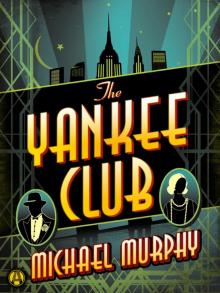 The Yankee Club
The Yankee Club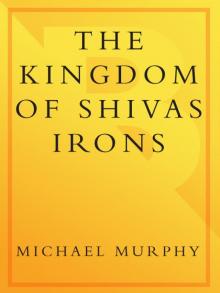 The Kingdom of Shivas Irons
The Kingdom of Shivas Irons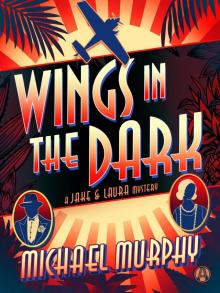 Wings in the Dark
Wings in the Dark The Big Brush-off
The Big Brush-off Dreamspinner Press Year Nine Greatest Hits
Dreamspinner Press Year Nine Greatest Hits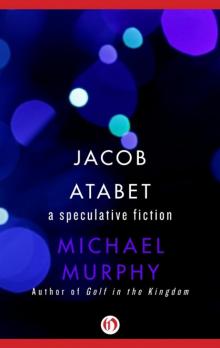 Jacob Atabet
Jacob Atabet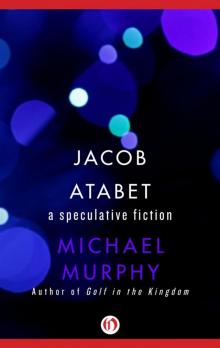 Jacob Atabet: A Speculative Fiction
Jacob Atabet: A Speculative Fiction A Night at the Ariston Baths
A Night at the Ariston Baths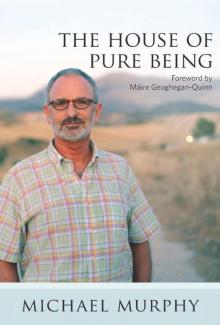 The House of Pure Being
The House of Pure Being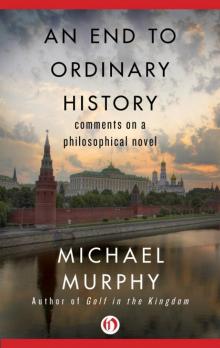 End to Ordinary History
End to Ordinary History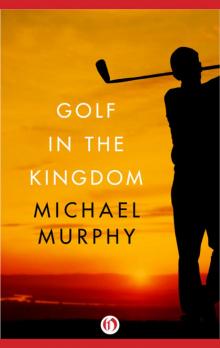 Golf in the Kingdom
Golf in the Kingdom All That Glitters
All That Glitters